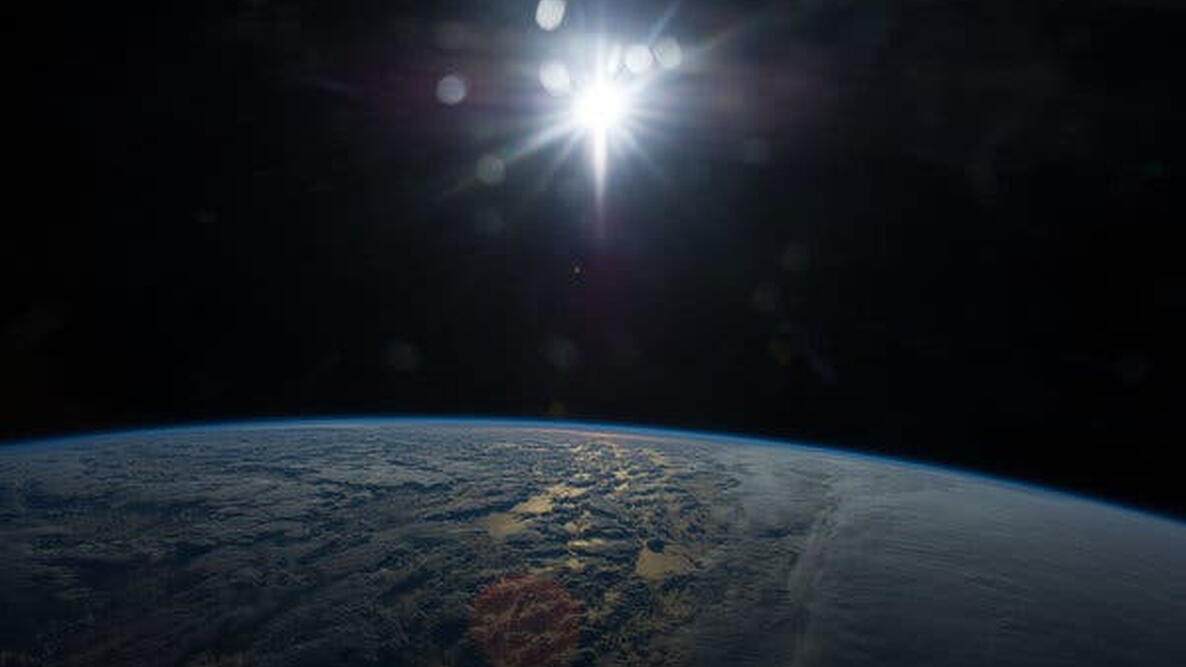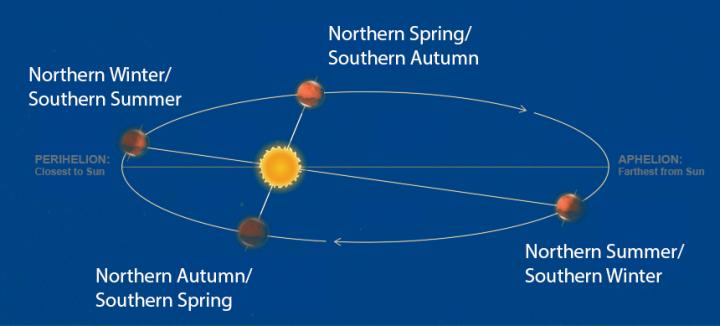
Sunset over Earth oceans as seen from the International Space Station.
When Earth is Closest and Farthest from the Sun in 2025
ADVERTISEMENT
I am 80 yrs old. I like still to learn new things everyday of my life. More than my mother or grandmother ever did. Thank you.
The bottom illustration shows the Northern Hemisphere tilted toward the sun, but calls it "Northern Winter/Southern Summer." Labels are misapplied here.
But good article explaining the seasons' independence from perihelion & aphelion!
To me, it would make more sense if the earth was warmer if the suns closer and vice Versa.. but then again I don’t really believe in space theory and neither did our ancients! Interesting, nonetheless.
Why is perihelion later in 2025, and aphelion is earlier in 2025? I would have expected both to change in the same direction.
It would take a bit of digging, but I expect the answer is the Earth-Moon system mucks up the ellipse. The US Naval Observatory seems to take that effect (and the planets) into account. Basically, the Earth and Moon revolve around their "barycenter," their center of mass, and the barycenter traces the elliptical orbit. When the barycenter is at perihelion and the moon is away from the Earth (we see a full moon), the Earth is a little closer to the sun than if we had a new moon. Things are harder to visualize at other phases of the moon, but that's when the timing of perihelion seems odd.
Around 1980 I wrote a computer program to compute sunrise and sunset times with a thought about selling it through the OFA. My derivation was based on orbital mechanics ignoring planets and moon, but I needed a good reference time for perihelion. After figuring out the above I went to the library and looked through old OFAs looking for perihelions near full moons and that provide a decent reference. My program is still very accurate. Maybe for its 50th birthday I'll tweak some of my constants.
Excellent question! Not having our astronomer available at the moment to confirm, our best guess is that it might have something to do in part with the variations in Earth’s orbit around the Sun (which involves the Earth/Moon orbit around a barycenter), and perhaps gravitational influences of other planets.
The definitions provided are contradictory of the Greek translation.
Didn’t the introduction say the earth is closer to the sun in January? The paragraph accompanyting the NASA diagram states the opposite.
Thank you, we have updated the article!











